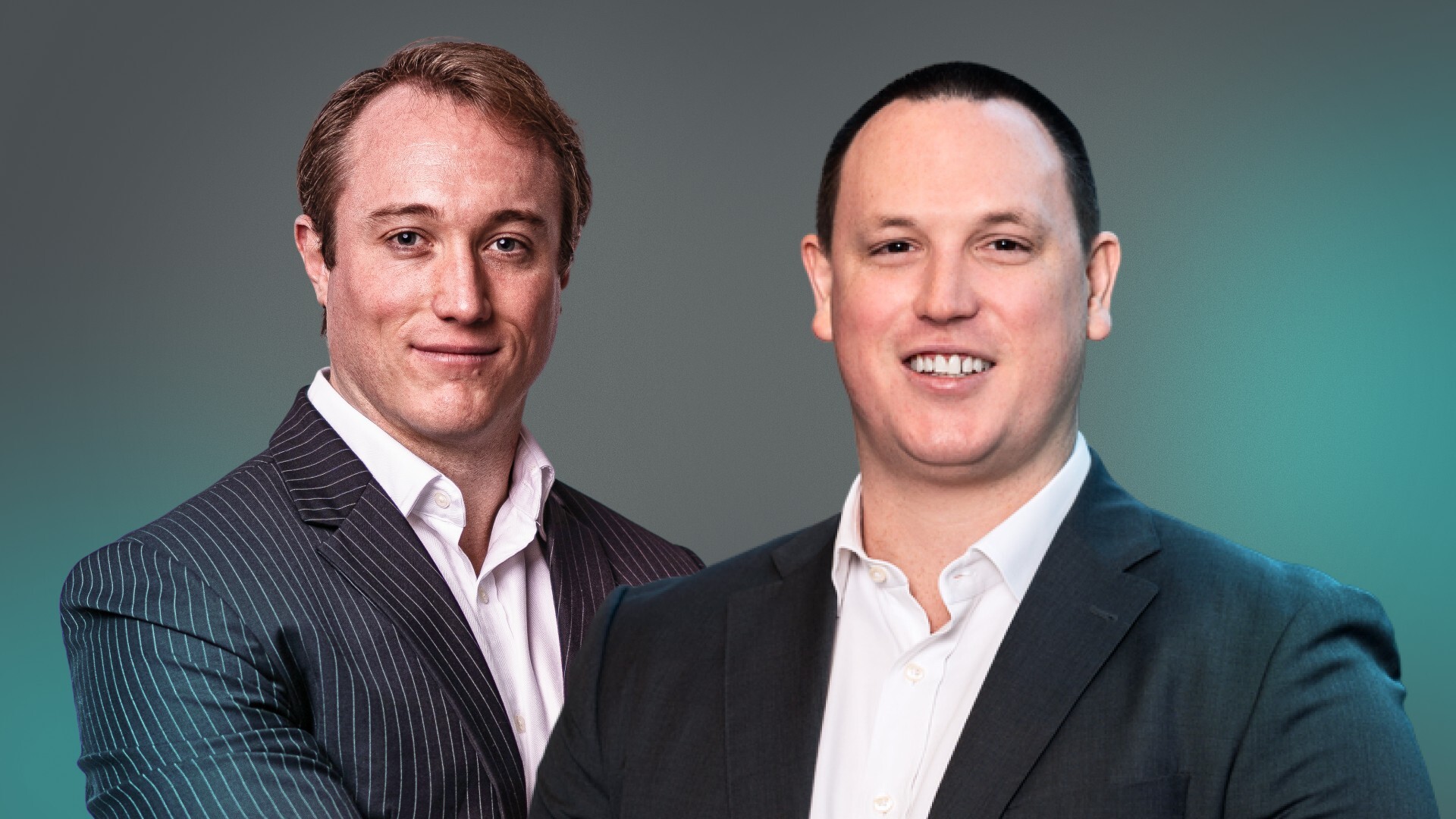Invest or pay down debt? Why the answer isn’t so simple
It’s a question I’ve constantly asked myself since I was lucky enough to buy a house and find myself chained to a 30-year mortgage. Do I keep every extra cent in my offset account to pay less interest? Or do I put that money into an investment? When a friend also asked me this exact question over dinner, I knew it was time to investigate.
According to Daniel Kelly, Chief Investment Officer at Viola Private Wealth, and Matthew Jones, Senior Financial Planner at Oreana Private Wealth, the answer depends on your individual circumstances - there’s no one-size-fits-all solution.

“It’s really about understanding your priorities and financial position,” Jones says. “Some clients are focused on building wealth through investments, while others are more comfortable reducing risk by clearing debt.”
At first glance, it seems like a simple calculation: if your investment earns more than your mortgage rate, investing wins. But that logic is flawed. Kelly explains:
“The biggest mistake I have seen people make is simply comparing their mortgage rate and the rate of return they expect on a prospective investment and assuming the difference is what their positive return will be,” says Kelly.
When mortgage rates were closer to 3%, taking on some investment risk may have seemed like a worthwhile trade-off. For example the S&P 500s historical average return of approximately 10% p.a.
But with many home loans now sitting around 6.5%, the maths is very different.
If you decide to invest simply because the investment return exceeds the mortgage rate, even by a small amount, then this isn’t a sufficient analysis.
“Using debt to fund investments needs to be very carefully considered,” Kelly says. “The net benefit you get from withdrawing and investing is not as obvious.”
That’s because it excludes two key considerations:
1. Risk vs risk-free return
2. Tax implications.
For this exercise, let’s use a hypothetical scenario of $100,000 sitting in a transaction/offset account, with a home loan interest rate of 6.5%.
Paying off debt is “risk-free after-tax return”
Paying down your home loan delivers a guaranteed financial benefit - something Kelly frames as a “risk-free after-tax return.”
Let’s paint a picture by using an average mortgage rate of 6.5%:
“If a family has $100,000 sitting in their transaction account offsetting a mortgage, it is generating an equivalent economic benefit of $6,500 per year,” he says.
This can therefore be thought of as a “risk-free” investment, because the $6500 is a saving in interest costs. This can also be thought of as equivalent to achieving a 6.5% after-tax return on your money.
Let’s compare that to corporate bonds, which currently yield around 4.6%.
“As soon as an investor moves from cash (deemed risk-free) to investing those funds, they are taking on volatility and the potential for those funds to become exposed to losses,” Kelly warns.
All investment comes with risk, so investors should expect a return that is commensurate with the risk involved.
As Kelly says, “I think most individuals and families would agree that for an extra 1 or 2% return [$1000-$2000] on their $100,000 cash, it is not worth justifying the risk of moving out of something which, for all intents and purposes, is a guaranteed return.”
The tax implications
So if we take the $6500 savings, this is an after-tax benefit because it’s saved from interest, rather than from generating income or capital growth (which IS subject to tax).
“To end up with the same $6,500 after-tax economic benefit [as paying down a 6.5% mortgage], you need to generate $9,285 on that $100,000,” Kelly explains. “That’s a pre-tax return of 9.285% p.a.”
The maths for this is $9285 x 0.70 (because of the 30% that is allocated to tax) = $6500.
“You cannot just look at a taxable return and compare it to a tax-free return," Kelly says. "You need to be comparing option A and option B on a like-for-like basis."
So on a like-for-like basis, the things to look out for are fairly simple, so far.
But what happens in the case where you withdraw money from a home loan for the purposes of investing these funds, and the interest incurred on those funds becomes tax-deductible? (Versus owner-occupied debt interest, which is not.)
This is where the “debt tax shield” comes in.
This is an economic benefit that, to some degree, partially offsets the tax liability incurred on the investment gains or income.
If $100,000 is borrowed from a mortgage and used for investing, and the interest cost is $6,500, and assuming a 30% marginal tax rate, then by calculating $6,500 x 0.30 = $1,950 becomes a tax benefit.
But even then, the decision isn’t straightforward.
“Deductibility depends on the purpose of the borrowed funds,” Kelly cautions. “The ATO may audit to distinguish personal vs investment use, so it’s important to speak to an accountant.”
When is investing worthwhile?
Taking the above considerations into account means that the rate of what investors should accept as a worthwhile return for taking their funds out of an offset or a loan is typically higher than what they might think.
Take this example: a client withdraws $1 million from a mortgage at a 6.5% interest rate and invests at 9% per annum.
Here’s how the numbers play out:
Interest cost: $65,000
Investment income: $90,000
Tax on income (30%): $27,000
After-tax income: $63,000
Tax shield from deductible interest: $19,500
Net benefit: $17,500 (or 1.75% above the 6.5% hurdle)
In contrast, if the mortgage rate were only 3%, the net benefit rises to $42,000 - or a 4.2% premium - on the same investment return. “The cost of the debt is very much the variable that can change this equation,” says Kelly.
However, it’s not 2022-2023 anymore.
Ultimately, Kelly suggests, “I would want to be receiving an additional, after-tax return of at least 2% p.a. to make the additional risk worthwhile… assuming the investment is lower risk and has a high probability of achieving that consistently, such as a professionally managed portfolio.”
Debt recycling - a bird in each hand?
While the risk-return trade-off is front and centre, there is another strategy that can help investors balance wealth creation along with mortgage reduction - debt recycling.
Jones explains the concept: “Debt recycling is a strategy that allows a homeowner to convert non-deductible debt (i.e., home mortgage) into potentially tax-deductible debt (i.e., investment loans), while simultaneously building an investment portfolio.”
It works like this:
1. Use surplus cash to pay down your home loan
2. Redraw or borrow an equivalent amount via an investment loan
3. Invest those funds in income-generating assets, such as an investment portfolio of stocks or managed funds
4. Potentially benefit from deductible interest and long-term returns
Jones echoes Kelly’s statement that to be worthwhile, “after-tax investment returns should exceed the after-tax cost of your home loan interest,” Jones says. Long-term, diversified portfolios may return 7–9% annually, but this comes with risk and volatility.
However, with interest rates in Australia expected to continue to fall further by year’s end, the cost of borrowing is also becoming less, making debt recycling as a strategy increasingly attractive.
Not only can this strategy enhance tax efficiency, but it may also accelerate your mortgage payoff, potentially combining the best of both worlds: lower debt and long-term capital growth.
Why it suits income-generating assets
Debt recycling can be well-suited for income-generating assets for the following reasons:
1. Regular income (from dividends, distributions or rent) can help service the investment loan and ease cash flow pressure.
2. Income can be offset against interest costs, delivering more predictable returns
That said, it’s crucial to focus on total returns - income plus capital growth - not just yield.
“Investment portfolios focused on ‘capital growth’ assets may offer lower income but higher total return potential over time,” Jones explains.
Additionally, “for assets held longer than 12 months, investors may benefit from the capital gains tax (CGT) discount, which can further enhance the tax efficiency of the debt recycling strategy.”
Jones stresses that the strategy is not for everyone. It’s best suited to experienced investors with stable income, significant equity, a high risk tolerance, and a long investment horizon.
For most, it’s a strategy to enhance, not replace, a traditional approach, offering a way to improve the tax-deductibility of existing mortgage debt while building wealth over time.
Kelly’s comments around risk is a reminder - “All of the normal considerations apply, including stage of life, investment goals, risk tolerance, diversifications as well as the knowledge and education about what the client is investing in."
"The fact that the investment is being funded by debt rather than cash does not change the need to take these factors into account, and using leverage in investing exacerbates risk."
Stay safe out there!
5 topics
.jpg)
.jpg)